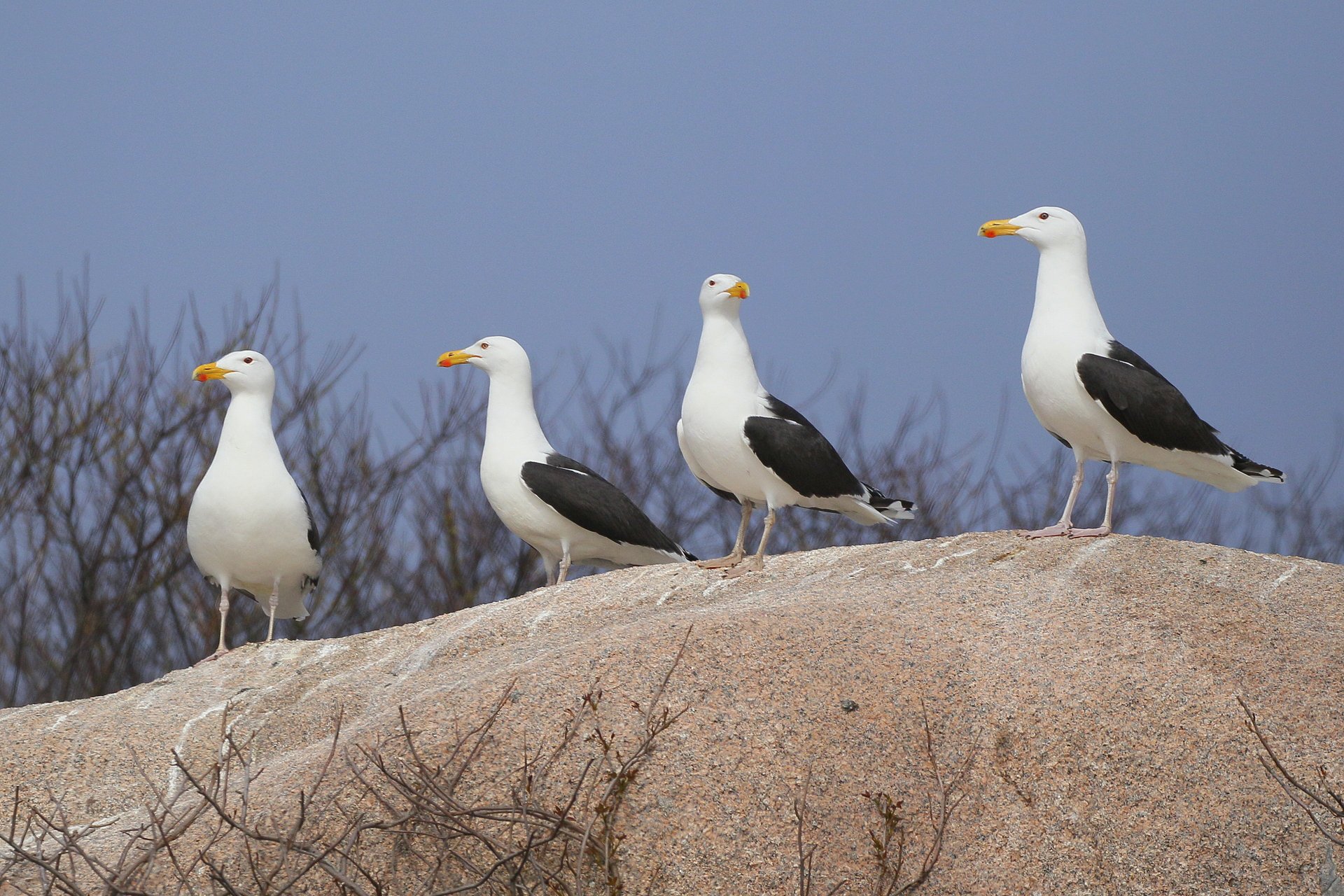Birds in Massachusetts
Gulls
Travel anywhere along the coast of Massachusetts, and you’ll undoubtedly come across a flock of these familiar birds. Despite its common usage, the term “seagull” is a misnomer, probably adopted because gulls spend time along the seashore; there is no gull species known as a seagull.
Types of Gulls
While Massachusetts hosts a variety of gull species at different times throughout the year, those commonly seen are herring, great black-backed, ring-billed, and laughing.
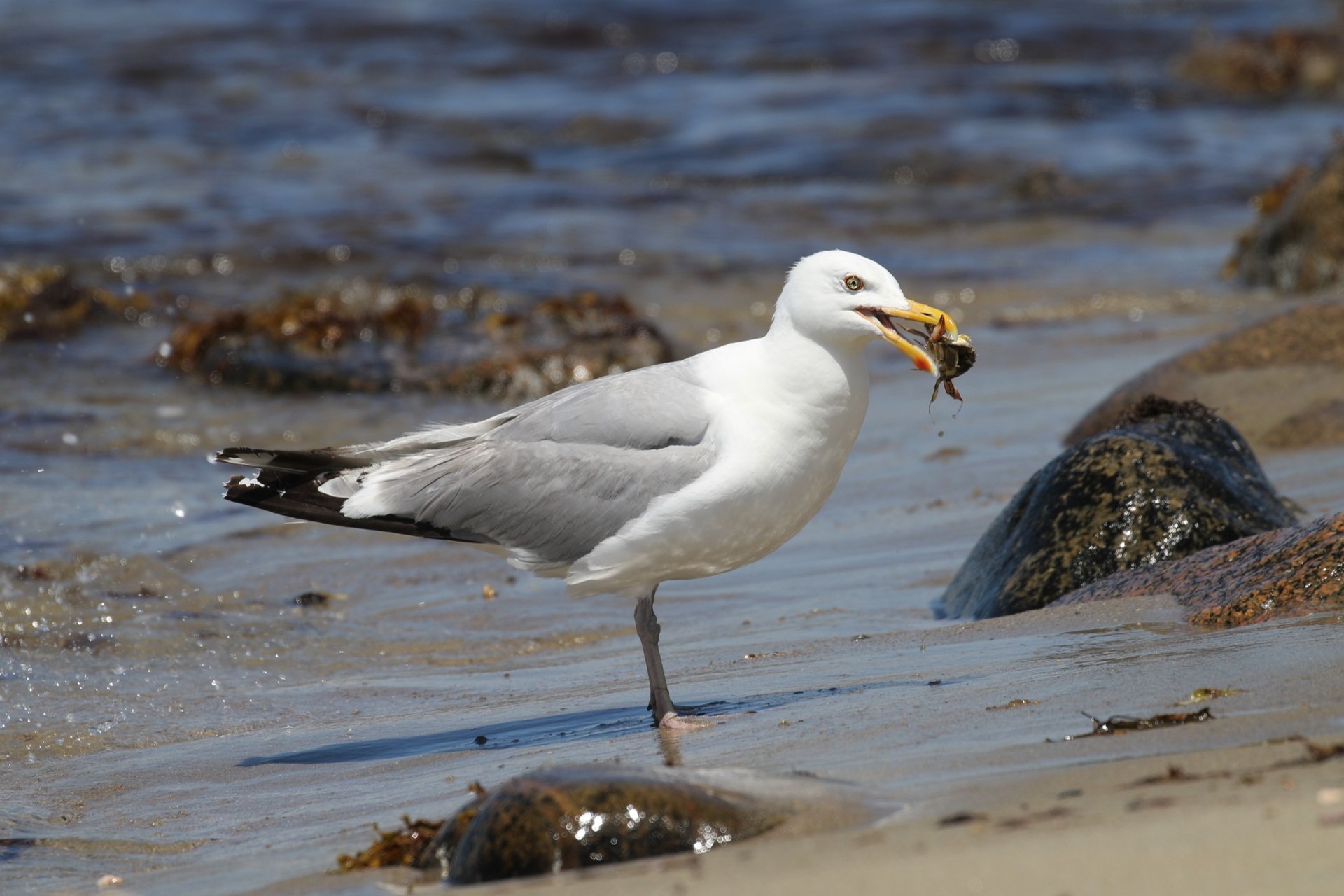
Herring Gull
Much larger than the ring-billed gull (25”), this species also has a gray back, gray wings with black tips, and white head, but its legs are light pink, and its bill is yellow with a red spot on the bottom near the tip.
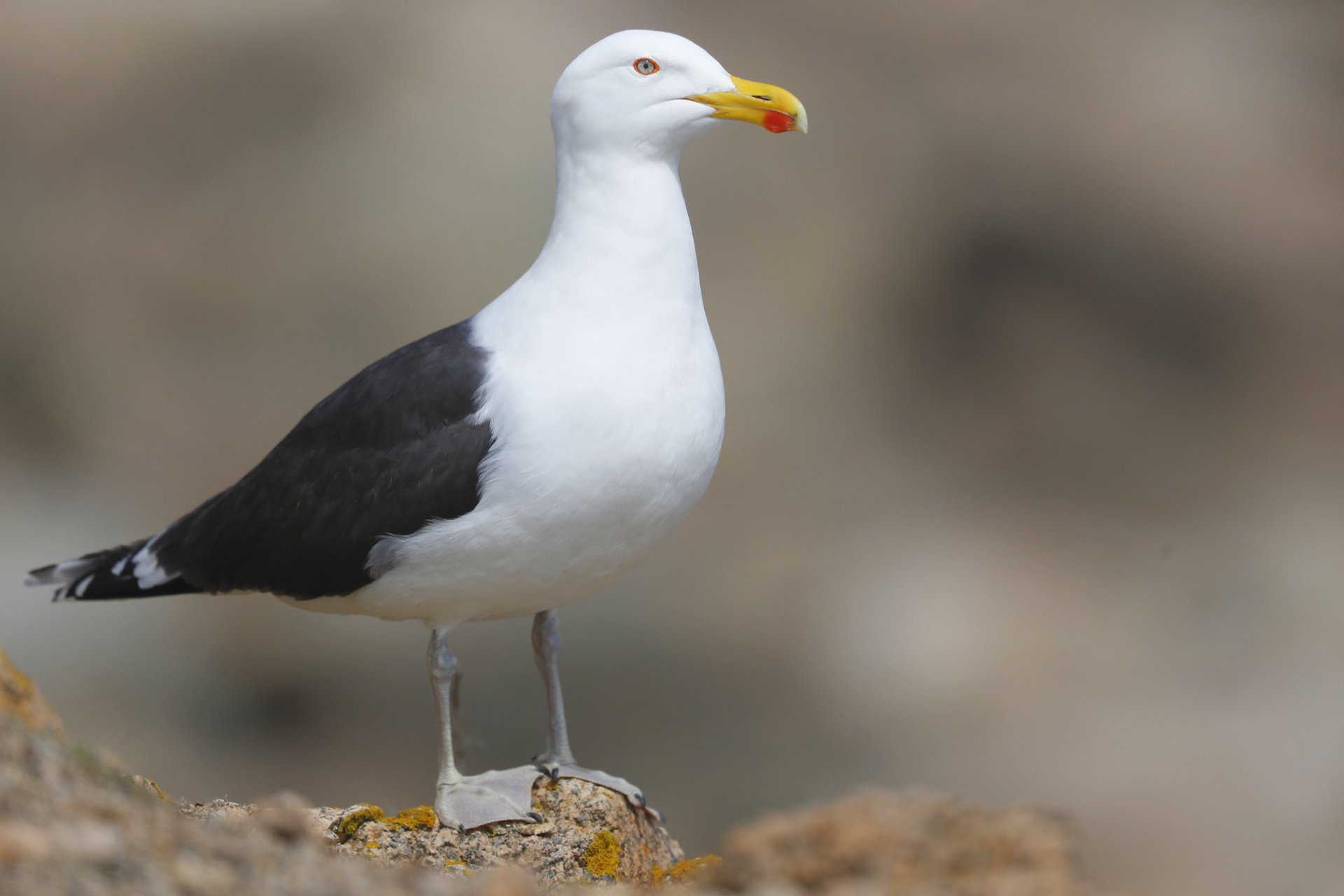
Great Black-backed Gull
The largest gull (30”), the great black-backed gull has a black back and wings, white head, and pale, light pink legs. A red spot on the bottom near the tip marks its yellow bill.
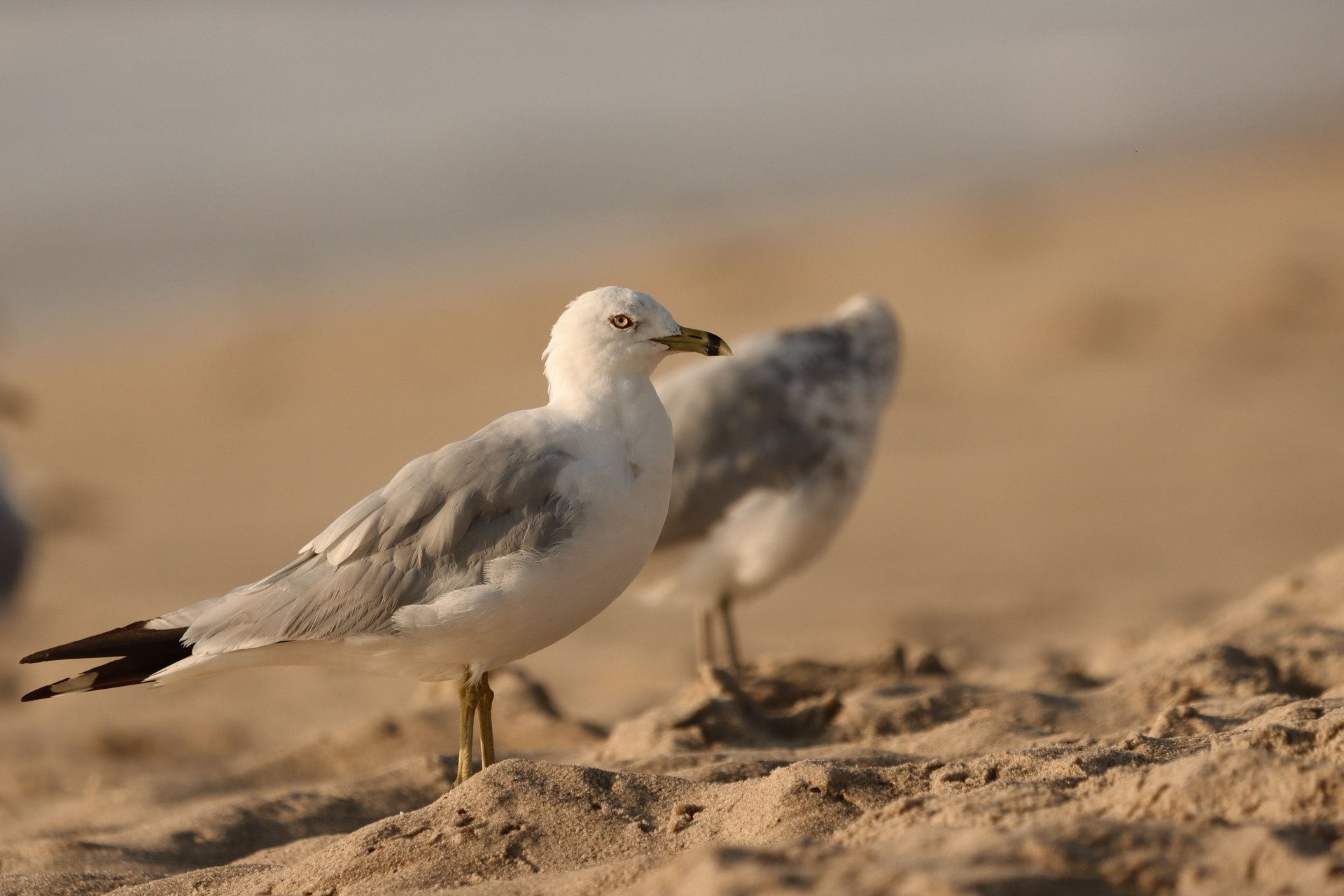
Ring-billed Gull
The smallest of our common gulls (17.5”), the ring-billed gull has a gray back, gray wings with black tips, and white head, yellowish legs, and bill with a dark band near the tip. Ring-billed gulls, which are most commonly seen in central Massachusetts, have never successfully bred in Massachusetts.
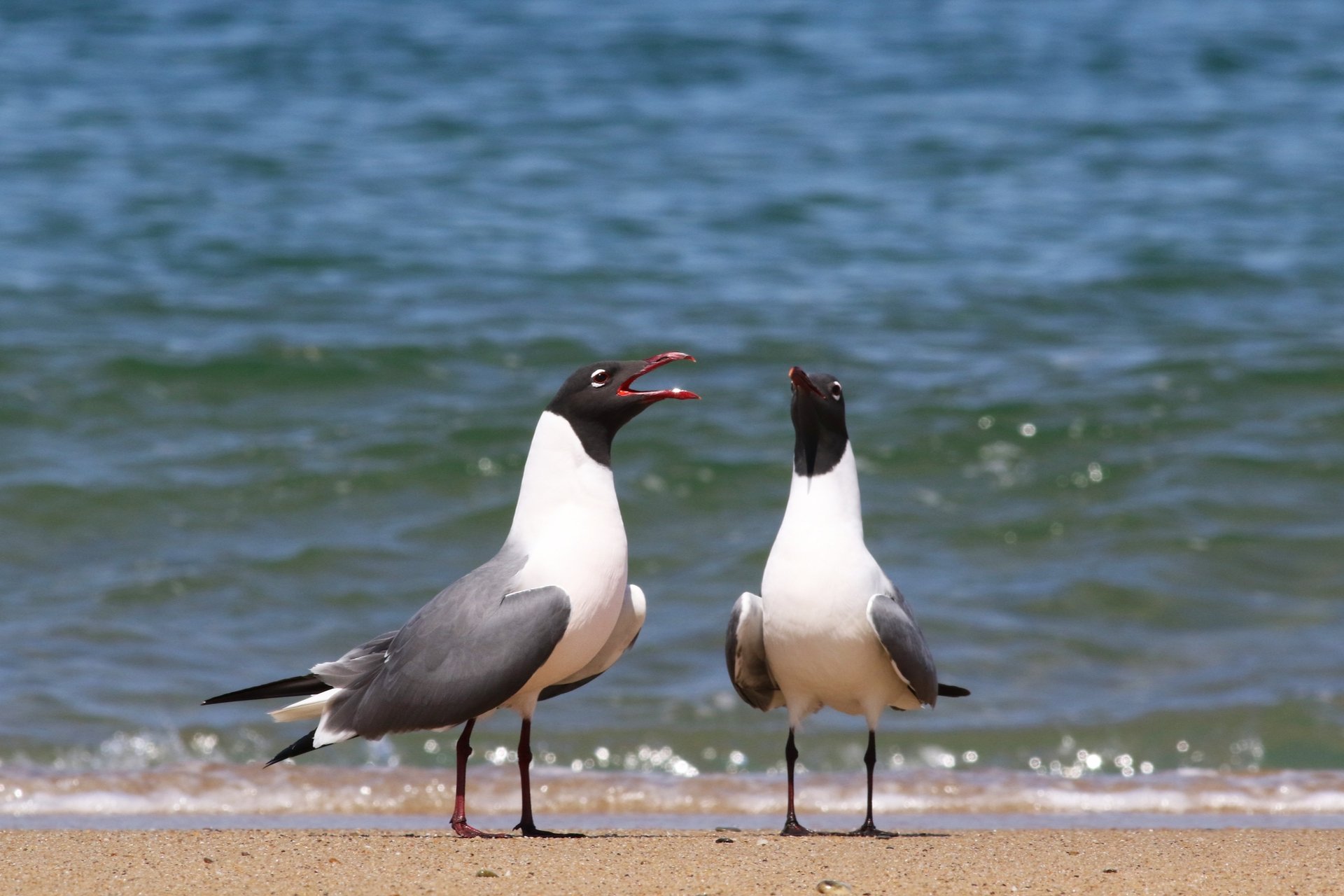
Laughing Gull
This 16.5-inch gull, with its distinctive black head and red bill, white neck and breast, gray back, and black tail can be seen along the coast of Massachusetts between April and November.
Gull Behavior
Where Do Gulls Live?
As colonial breeders, herring and great black-backed gulls will often nest in the same colonies on islands and rocky coastal areas. Occasionally they will nest on the roofs of buildings. Many of their colonies occur on islands historically occupied by several tern species. These gulls have forced terns to use less desirable nesting sites on the mainland, seriously affecting terns’ breeding success.
Gull Life Cycle
The nest of a herring gull is little more than a scrape, usually lined with grass and feathers, while the great black-back builds a mound of seaweed, grass, or other debris, with a shallow depression in the center. Both species incubate for 27 to 30 days. Herring gull chicks can fly at five to six weeks old, while great black-backed gulls fledge at seven to eight weeks. Both parents care for the young.
What Do Gulls Eat?
Gulls are opportunistic feeders, exploiting virtually any food source they can find. At sea they will eat small fish, and along the coast they eat mollusks, crustaceans, insects, eggs, and even smaller birds. An analysis of regurgitated pellets has revealed steak and pork bones, plastic wrap and utensils, aluminum foil, paper towel, and pieces of rubber, wood, metal, and glass.
Open landfills were once a primary food source for gulls, but most of these facilities are now capped and closed. Outflow sewage treatment plants also attracted gulls, but many of these have recently been cleaned up. Of course, the disposed byproducts of the commercial fishing business (both from boats and processing plants) are ambrosia to gulls, and freshly plowed farm fields expose tasty invertebrates for them to eat.
Where Can I See Gulls?
Early in the 20th century, gulls were primarily winter visitors to the state. In 1912, the first pair of herring gulls was found breeding on Martha’s Vineyard, and in 1931, the first great black-backed gull nest was discovered in Salem.
Today gulls are a common sight in Massachusetts year-round. Their numbers have increased enormously in the past century, partially due to their protection from hunters, but also because of the increase in food sources supplied by people.
During stormy weather, large numbers often congregate on fields, freshwater lakes, and reservoirs. At night, gulls retreat to communal roosts on coastal islands or in open water on lakes and at sea. Of course, visitors to fast-food restaurants have undoubtedly witnessed flocks of gulls inspecting the dumpster at some time or another.
Gulls can be found at many of our coastal wildlife sanctuaries on Cape Cod and the islands.
How to Deter Gulls
Although gulls are beneficial as scavengers, they also compete with terns for nesting habitat and occasionally cause issues for people. Flocks of gulls may gather on rooftops, waterfront property, playing fields, airports, and reservoirs.
The simplest way to deter gulls: don’t feed them. This only encourages their presence. Eliminate food sources that may attract them, such as open trash containers.
If gulls are an issue, you can try one of these exclusion techniques.
- For Narrow Areas: Install “porcupine wire,” a series of stainless-steel strips with pointy spines, on roof peaks to restrict landing without injuring the birds.
- For Medium-sized Areas: A horizontally rotating spinner can make it impossible for gulls to perch on roofs and boats. Wires extend out from the rotating spindle and rotate with the wind.
- For Large Areas: Cover wide expanses with plastic bird netting (found at garden shops) or form a grid by stringing parallel stainless-steel wire or nylon monofilament line above the area, spaced six to eight feet apart. Place the wires or netting high enough so birds can’t land on the ground. Gulls don’t like flying under wires or netting. Also, since gulls prefer areas of low vegetation or no vegetation, allow the grass to grow higher than eight inches. This will make an area less attractive as a resting site.
- Fright Techniques: Large (24” diameter) shiny Mylar balloons or large (2’x 3’) black plastic flags, widely spaced, may provide an effective deterrent if moved frequently. Broadcasts of recorded distress and alarm calls of gulls may also work in some situations.
All birds are protected by federal laws under the “Migratory Bird Act of 1918,” as well as by Massachusetts state laws. It is illegal to destroy, relocate or possess birds, their nests or their eggs.
How Mass Audubon is Supporting Birds in Massachusetts
Mass Audubon works at our wildlife sanctuaries and beyond to ensure that the nature of Massachusetts continues to thrive. By scientifically monitoring Massachusetts birdlife, Mass Audubon informs important conservation decisions and launches targeted initiatives to help at-risk species. In addition, fostering healthy habitats, supporting native species, and educating people about the importance of nature conservation is critical to our success. Learn more about our work
How You Can Support Birds in Massachusetts
Mass Audubon supports birds like gulls every day, but we couldn’t do it without the support of our 160,000+ members.
Help support gulls, and birds like them, by becoming a member today.
Upcoming Bird Programs
See MoreWednesday Morning Birding
-
Newburyport and vicinity
-
Wednesday, December 31
9:30am-12:30pm
Adults
New Year's Day Birdwatching
-
Ipswich River Wildlife Sanctuary, Topsfield
-
Thursday, January 1
8:00-11:00am
Adults
New Year's Day Birdwatching
-
Joppa Flats Education Center, Newburyport
-
Thursday, January 1
8:00-11:00am
Adults
Stay Connected
Don't miss a beat on all the ways you can get outdoors, celebrate nature, and get involved.



